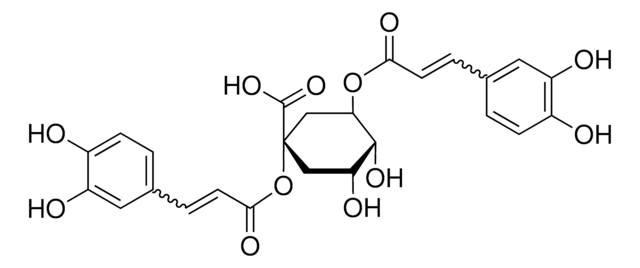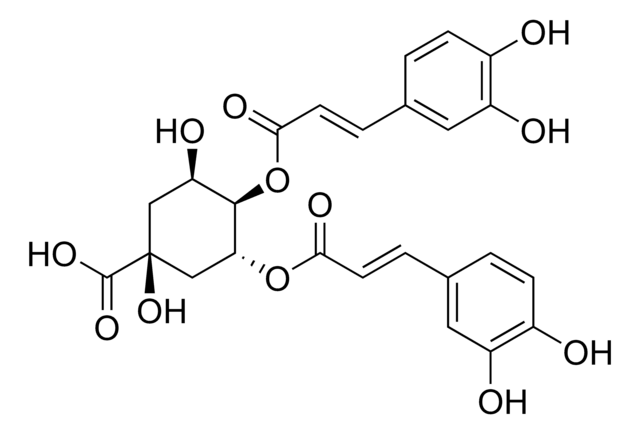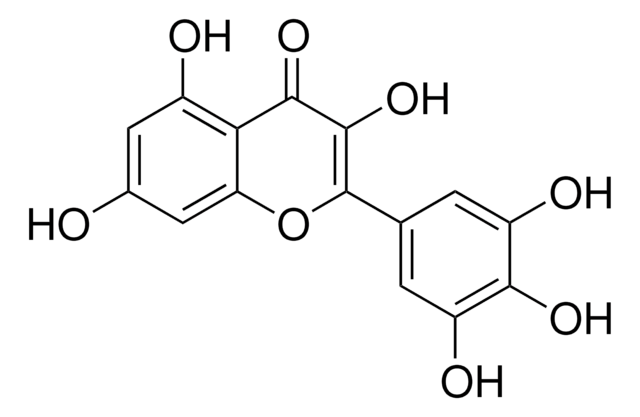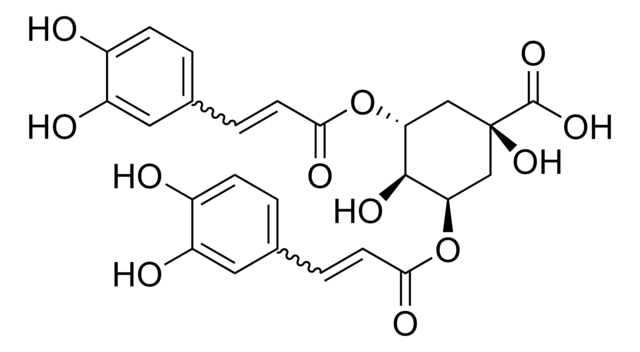SBR00002
Arzanol
from Helichrysum italicum, ≥98%
Synonym(s):
3-[[3-Acetyl-2,4,6-trihydroxy-5-(3-methyl-2-buten-1-yl)phenyl]methyl]-6-ethyl-4-hydroxy-5-methyl-2H-pyran-2-one
About This Item
Recommended Products
biological source
Helichrysum italicum
Quality Level
Assay
≥98%
form
powder
application(s)
metabolomics
vitamins, nutraceuticals, and natural products
storage temp.
−20°C
SMILES string
OC1=C(CC2=C(O)C(C)=C(CC)OC2=O)C(O)=C(C(C)=O)C(O)=C1CC=C(C)C
InChI
1S/C22H26O7/c1-6-16-11(4)18(24)15(22(28)29-16)9-14-19(25)13(8-7-10(2)3)20(26)17(12(5)23)21(14)27/h7,24-27H,6,8-9H2,1-5H3
InChI key
ZOIAPLVBZQQHCG-UHFFFAOYSA-N
General description
Application
Biochem/physiol Actions
Arzanol inhibits the activation of inflammatory transcription factor NFκB, HIV replication in T cells, releases of IL-1β, IL-6, IL-8, and TNF-α,and biosynthesis of PGE2 by potentially inhibiting the mPGES-1 enzyme.
Arzanol inhibits the activation of inflammatory transcription factor nuclear factor-KB (NF-KB), human immunodeficiency virus (HIV) replication in T cells, releases of interleukin (IL)-1β, IL-6, IL-8, and tumor necrosis factor (TNF)-α and biosynthesis of prostaglandin E2 (PGE2) by potentially inhibiting the mPGES-1 enzyme. It also possesses antioxidant and cytotoxic activity.
Reconstitution
Storage Class Code
11 - Combustible Solids
WGK
WGK 3
Flash Point(F)
Not applicable
Flash Point(C)
Not applicable
Choose from one of the most recent versions:
Certificates of Analysis (COA)
Don't see the Right Version?
If you require a particular version, you can look up a specific certificate by the Lot or Batch number.
Already Own This Product?
Find documentation for the products that you have recently purchased in the Document Library.
Our team of scientists has experience in all areas of research including Life Science, Material Science, Chemical Synthesis, Chromatography, Analytical and many others.
Contact Technical Service







